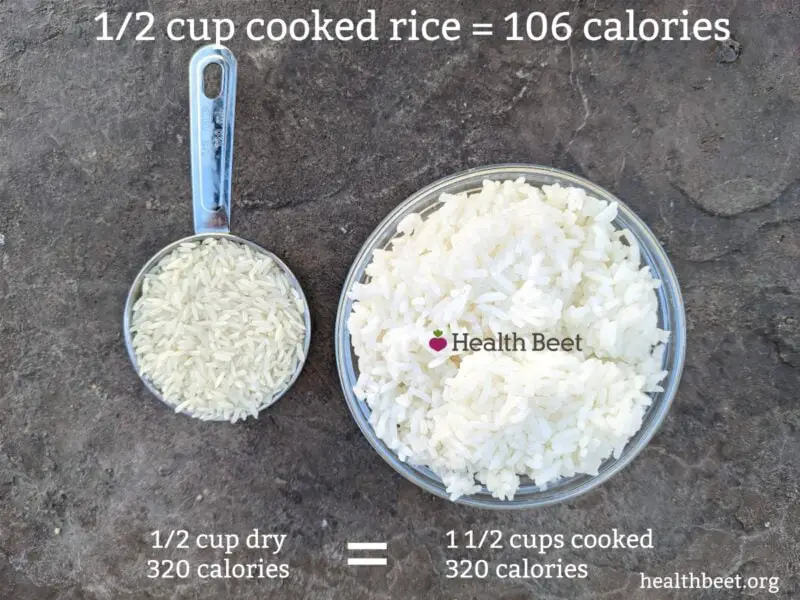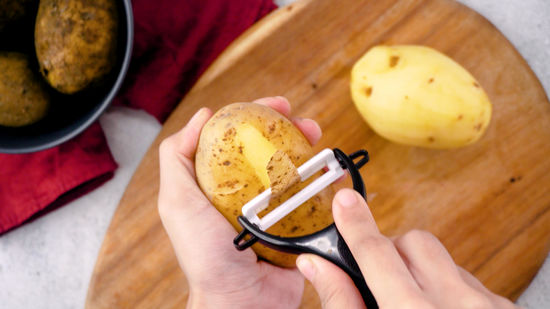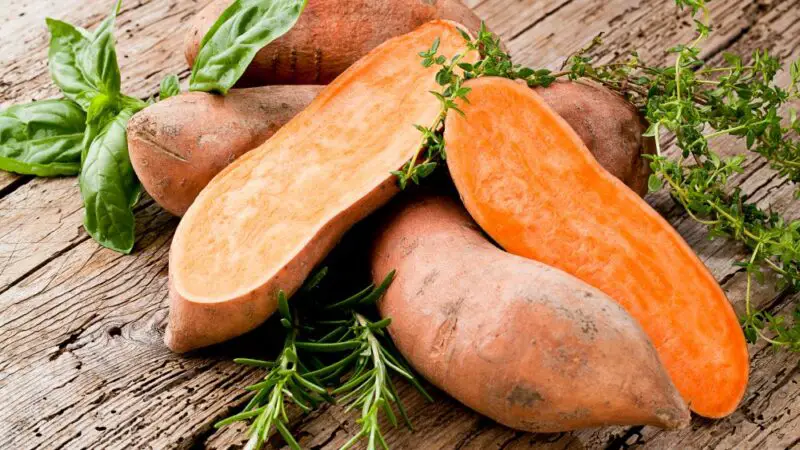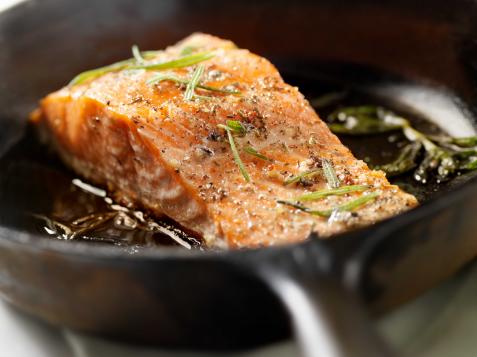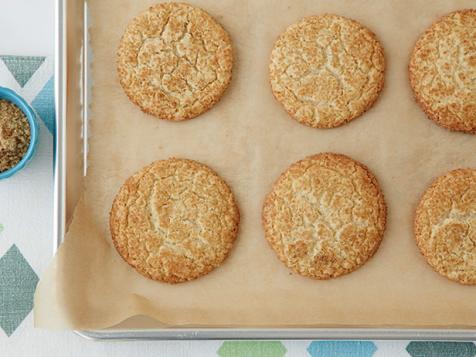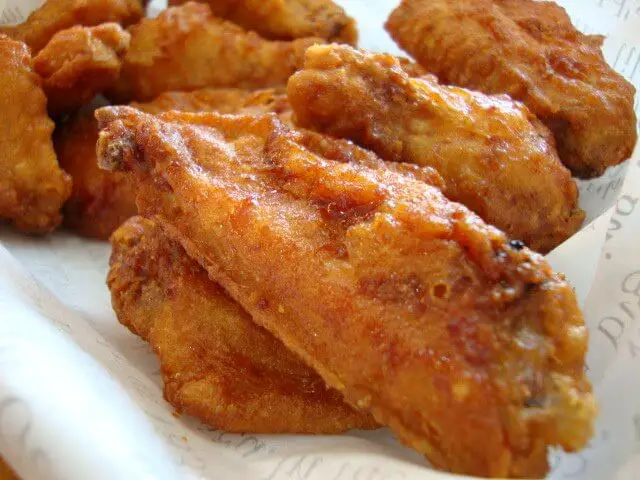Do You Measure Cooked or Uncooked Rice for Calories?
There is a lot of confusion when it comes to measuring rice for calories. When cooking rice, it is important to measure it precisely, not just for calorie count but also for achieving the desired texture and consistency. In this article, we’ll clear up the confusion around measuring rice for calories and explain the importance of accurate measurement whether you’re cooking for yourself or your family.
Understanding Rice Measurements
Rice is usually measured by volume or weight. Measuring by weight is more accurate as it gives you the exact amount of rice you need. However, most people measure rice by volume using measuring cups. This method is quicker and easier but can lead to inconsistency in measurements. Different countries use different units to measure rice such as cups, grams, ounces, etc. Therefore, it’s essential to be consistent in your measurements irrespective of the unit of measurement.
Nutritional Information
Rice is a nutritious staple food that provides carbohydrates, protein, vitamins, and minerals. Uncooked rice has about 375 calories per cup (185 grams). Once cooked, the calorie count changes due to absorption of water during boiling.
The nutritional information of cooked rice will vary based on the cooking method used. For instance, boiled rice retains most nutrients while fried rice loses some vitamins and minerals due to frying.
Cooked Rice Measurement
To measure cooked rice accurately, you should use a kitchen scale as it gives precise measurements of weight in grams or ounces. Measuring cups can also be used for cooked rice but may not be as accurate as weighing.
For those who don’t have a kitchen scale at home and prefer using measuring cups, here are two different methods you can use:
- Method 1: Use a measuring cup to measure the cooked rice
- Method 2: Transfer the cooked rice to an empty measuring cup and then measure it
Measuring cooked rice using the second method is more accurate as it ensures that you’re measuring only the cooked rice and not any water that might not be fully absorbed in the rice.
Uncooked Rice Measurement
Measuring uncooked rice is also done by volume or weight. Using a kitchen scale is the most precise way of measuring uncooked rice by weight. However, if you don’t have a kitchen scale at home, you can use measuring cups or any other unit of measurement.
The most commonly used measurement for uncooked rice is a cup. It’s important to note that different types of rice have different volumes i.e. one cup white rice may weigh different from one cup brown rice.
Determining Caloric Value
Calculating calorie content accurately requires three pieces of information: serving size, number of servings, and calorie content per serving. The nutrition label on packaged rice will provide these details. When cooking from scratch, you can calculate calories by using nutrition data for each ingredient and multiply it by the number of servings.
To determine calorie count for cooked and uncooked rice, follow these steps:
- Weigh the uncooked rice that you intend to cook or measure it with a measuring cup.
- Cook your measured rice (using your preferred cooking method)
- Weigh the cooked rice once it’s ready or measure it with a measuring cup
- Determine calories per serving by dividing the total number of calories in your weighed or measured cooked rice by the number of servings you intend to have.
It’s essential to understand serving sizes and how they affect calorie counting. For instance, for a cup of cooked rice with 205 calories, it means that this is the amount of calories per one cup. If you consume more than a cup of cooked rice, you will be consuming more calories.
How To Control Calories While Consuming Rice?
Controlling calorie consumption is important regardless of what food you’re eating. Here are some tips on how to control calorie intake from rice:
- Portion Control: Use measuring cups or a kitchen scale to control portions before cooking.
- Hydration: Cook rice in broth, stock, or coconut milk instead of water for added flavor and moisture instead of using butter or oil to add flavor.
Best Practices For Measuring Rice Calories
To ensure accurate measurement when calorie counting your rice, follow these best practices:
- Weighing results in more accuracy than using measuring cups
- If using measuring cups, ensure you’re consistent with the measurement cup size used every time you cook
- Make sure to fluff up and aerate the rice before measuring as this will give a more accurate measurement.
- Caste the amount measured always to include anything spilled around during measurement.
Conclusion
In conclusion, measuring rice accurately is essential for controlling nutritional content and ensuring that your food tastes great every time. It doesn’t matter whether you measure your rice weight or volume; consistency is key. Although weighing may be necessary for those who want precise measurements, volume measurements are accurate enough for most people.
Measuring your rice’s caloric content can be helpful and is essential when monitoring your consumption. Be sure to follow the serving size recommendations in the nutrition label and use common sense when portioning your food. With these few simple tips, you can enjoy your rice without worrying about calorie intake.
Frequently Asked Questions
Do You Measure Cooked or Uncooked Rice for Calories?
1. How do you measure the calories in uncooked rice?
To measure the calories in uncooked rice, you need to use a measuring cup and calculate the number of calories per serving based on the nutritional information provided on the label.
2. Is there any difference in calorie count between cooked and uncooked rice?
Yes, there is a difference in calorie count between cooked and uncooked rice. Cooking the rice increases its volume and weight, which results in a decrease in its calorie density.
3. Should you base your serving size of cooked or uncooked rice on the same measurement?
No, you should not base your serving size of cooked or uncooked rice on the same measurement. It is recommended to use different measurements to determine proper serving sizes based on whether you are measuring cooked or uncooked rice.
4. Do cooking methods affect the calorie count in rice?
Cooking methods can affect the calorie count in rice. For example, steaming or boiling rice may result in a higher calorie count compared to microwaving it. This is because other methods may allow for water retention and less evaporation during cooking, leading to more calorie-dense rice.
